
漢德百科全書 | 汉德百科全书
 Belgium
Belgium
 Belgium
Belgium
 Germany
Germany
 Estonia
Estonia


 Financial
Financial
 Currency
Currency

 Financial
Financial
 *Germany economic data
*Germany economic data

 Financial
Financial
 *European Union economic data
*European Union economic data

 Financial
Financial
 *France economic data
*France economic data

 Financial
Financial
 *Italy economic data
*Italy economic data

 Financial
Financial
 Special Drawing Right
Special Drawing Right

 Financial
Financial
 *Brazil economic data
*Brazil economic data

 Financial
Financial
 *China economic data
*China economic data

 Financial
Financial
 *India economic data
*India economic data

 Financial
Financial
 *Indonesia economic data
*Indonesia economic data

 Financial
Financial
 *Russia economic data
*Russia economic data
 Finland
Finland
 France
France
 Greece
Greece
 Hartwährung/Strong Currency
Hartwährung/Strong Currency
 Ireland
Ireland
 Italy
Italy
 Latvia
Latvia
 Luxembourg
Luxembourg
 Malta
Malta
 Netherlands
Netherlands
 Austria
Austria
 Portugal
Portugal
 Slovakia
Slovakia
 Slovenia
Slovenia
 Spain
Spain
 Cyprus
Cyprus

 Belgium
Belgium
 Germany
Germany
 Estonia
Estonia


 Financial
Financial
 Finland
Finland
 France
France
 Greece
Greece

 Hand in Hand
Hand in Hand
 Ireland
Ireland
 Italy
Italy
 Croatia
Croatia
 Latvia
Latvia
 Lithuania
Lithuania
 Luxembourg
Luxembourg
 Malta
Malta
 Netherlands
Netherlands
 Austria
Austria
 Portugal
Portugal
 Slovakia
Slovakia
 Slovenia
Slovenia
 Spain
Spain

 Economy and trade
Economy and trade
 Cyprus
Cyprus

 Belgium
Belgium
 Denmark
Denmark
 Germany
Germany
 Estonia
Estonia
 Finland
Finland
 France
France

 History
History
 M 1500 - 2000 AD
M 1500 - 2000 AD

 History
History

 History
History
 N 2000 - 2100 AD
N 2000 - 2100 AD
 Greece
Greece

 Ile-de-France
Ile-de-France
 Ireland
Ireland
 Italy
Italy


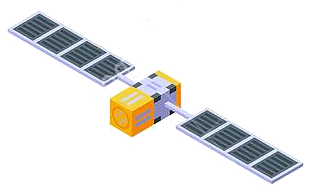
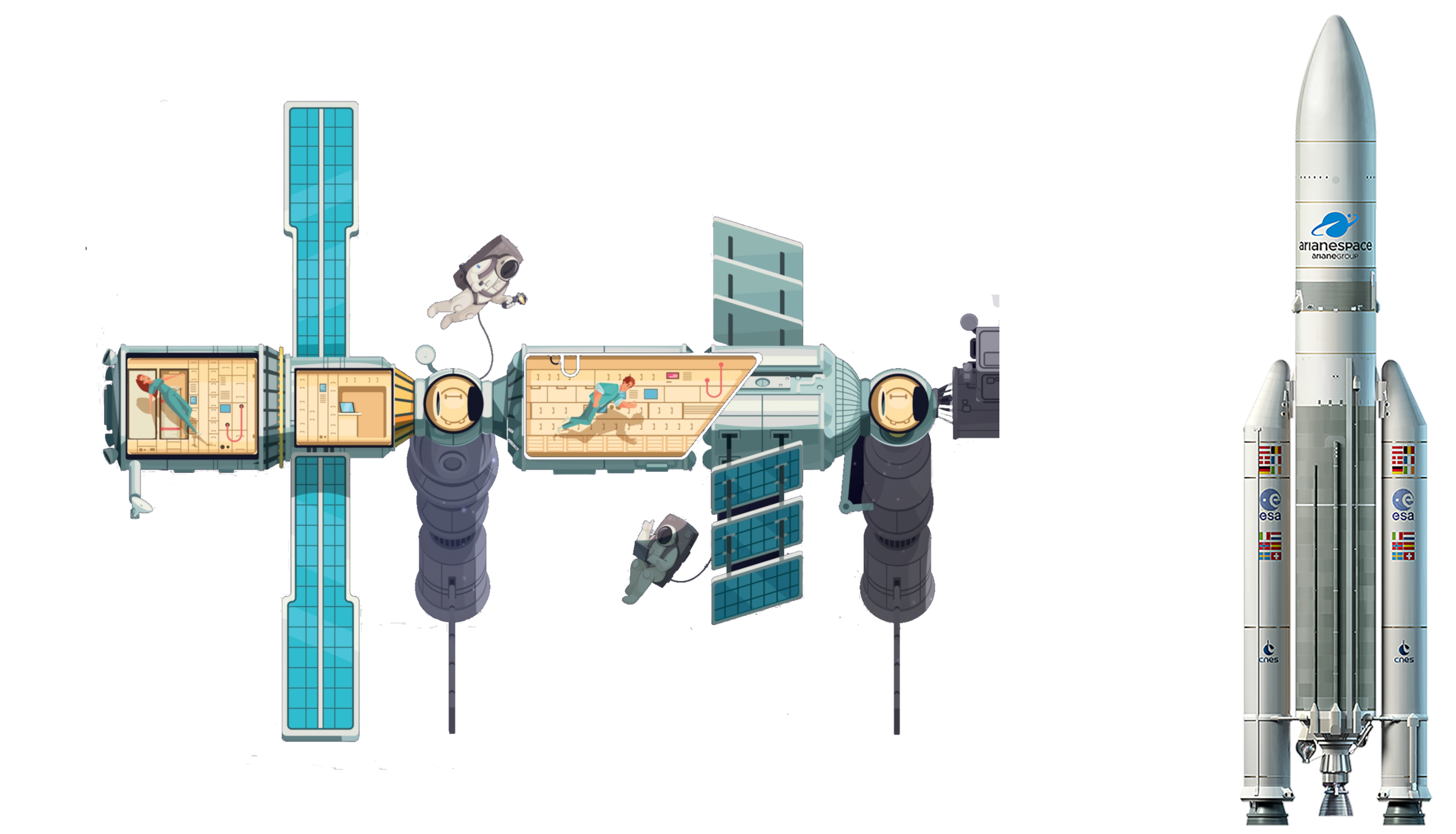 Aerospace
Aerospace
 *ASI
*ASI



 Aerospace
Aerospace
 *CNES
*CNES



 Aerospace
Aerospace
 *DLR
*DLR



 Aerospace
Aerospace
 *NASA
*NASA



 Aerospace
Aerospace
 Missions to Mars
Missions to Mars



 Aerospace
Aerospace
 Artemis program
Artemis program
 Luxembourg
Luxembourg
 Netherlands
Netherlands
 Norwegen
Norwegen
 Austria
Austria
 Poland
Poland
 Portugal
Portugal
 Romania
Romania
 Sweden
Sweden
 Switzerland
Switzerland
 Spain
Spain
 Czech Republic
Czech Republic
 Hungary
Hungary
 United Kingdom
United Kingdom

 Science and technology
Science and technology
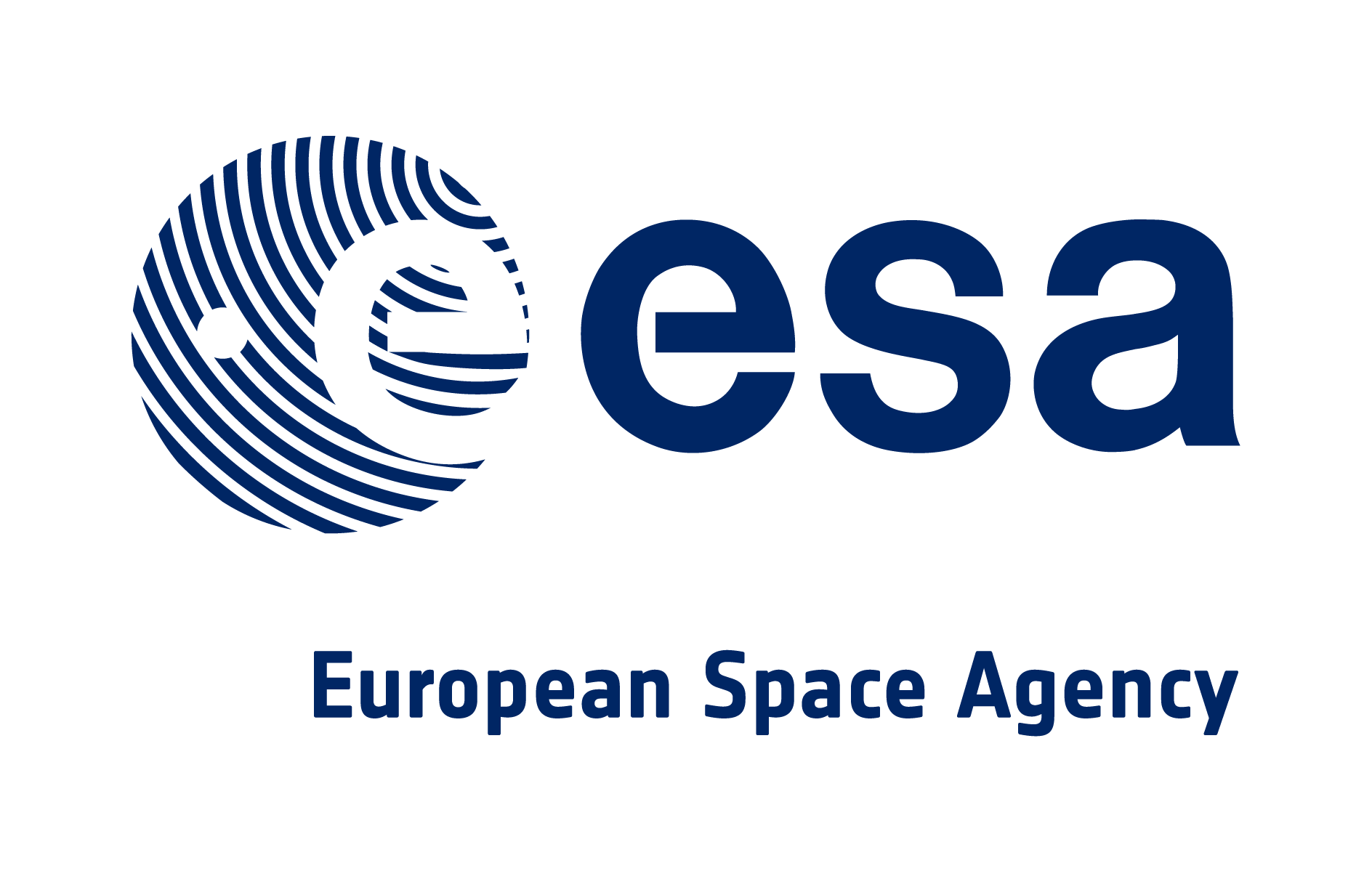
Die Europäische Weltraumorganisation, englisch European Space Agency (ESA), französisch Agence spatiale européenne (ASE), ist eine internationale Weltraumorganisation mit Sitz in Paris. Sie wurde am 30. Mai 1975 mit dem Übereinkommen zur Gründung einer Europäischen Weltraumorganisation mit Unterzeichnung unter das Abkommen durch die zunächst noch neun ursprünglichen Gründungsmitglieder in Paris gegründet.[3] Nach Hinterlegung der letzten Ratifikationsurkunde durch Frankreich trat am 30. Oktober 1980 gemäß Artikel XXI Absatz 1 des Übereinkommens die Gründung dann in Kraft.[3][4][5]
Die Gründung bezweckte eine bessere Koordinierung der europäischen Raumfahrtaktivitäten, um technologisch gegenüber den Raumfahrtnationen Sowjetunion und Vereinigte Staaten gleichberechtigt auftreten zu können. Sie hat 22 Mitgliedstaaten und beschäftigte 2017 etwa 2200 Mitarbeiter.[6]
Die ESA ist die Nachfolgeorganisation der europäischen ELDO, ESRO und der Europäischen Fernmeldesatelliten-Konferenz (CETS). Wie diese beschränkt sie sich gem. Art. II ihres Statuts in ihren europäischen Projekten zur Weltraumerforschung und -nutzung auf „ausschließlich friedliche Zwecke“.
Die Mehrzahl der EU-Staaten ist an der ESA beteiligt. Daneben engagieren sich dort auch die Schweiz und Norwegen. Die ESA kooperiert zunehmend mit der EU[7] sowie den nationalen Raumfahrtagenturen insbesondere Deutschlands und Frankreichs.[8]
Die ESA ist gemeinsam mit der NASA Gründungsmitglied des Consultative Committee for Space Data Systems (CCSDS).
欧洲航天局(欧空局)是在1975年由一个政府间会议设立的,目标是专门为和平目的提供和促进欧洲国在空间研究、空间技术和应用方面的合作。它的前身是欧洲航天研究组织和欧洲航天器发射装置研制组织。
欧空局有14个成员国:奥地利、比利时、丹麦、芬兰、法国、德国、爱尔兰、意大利、荷兰、挪威、西班牙、瑞典、瑞士、大不列颠及北爱尔兰联合王国。加拿大与欧空局订有一个密切合作的协定。
欧空局由各成员国代表组成的理事会领导,行政首长是总干事。欧空局1997年预算约为30亿埃居(35亿美元)。雇用的工作人员约为1,750人。
成员国必须参加强制性的科学和基础技术方案,但自行决定对地球观测、电信、空间运输系统、空间站和微重力方面的各个任选方案的贡献。
欧空局有下列机构:
(a)设在巴黎的总部,政治决定在此作出;
(b)设在荷兰诺德韦克的欧洲航天研究和技术中心,它是欧空局的主要技术机构,大多数项目小组以及空间科学部和技术研究和支助工程师在此工作。欧洲航天研究和技术中心还提供有关的试验设施;
(c)设在德国达姆施塔特的欧洲航天空间操作中心,它负责所有卫星操作以及相应的地面设施和通信网络;
(d)设在意大利弗拉斯卡蒂的欧洲航天研究所,它的主要任务是利用来自空间的地球观测数据;
(e)设在德国porz-Wahn的欧洲航天员中心,它协调所有欧洲航天员活动,包括未来欧洲航天员的培训。
欧空局还对设在库鲁的欧洲航天港圭亚那航天中心作出贡献。(Quelle:http://www.cnsa.gov.cn/n615708/n620174/n620669/n888645/67008.html)
欧洲空间局(法语:Agence spatiale européenne,缩写:ASE; 英语:European Space Agency,缩写:ESA)是由欧洲数国政府组成的的国际空间探测和开发组织,总部设在法国首都巴黎。欧洲空间局负责阿丽亚娜4号和阿丽亚娜5号火箭运载火箭的研制与开发。
欧洲空间局的前身,欧洲航天研究组织(European Space Research Organization,ESRO)经过1962年6月14日签署的一项协议,于1964年3月20日建立。如今它仍旧是ESA的一部分,称为欧洲空间研究与技术中心,位于荷兰诺德韦克。
ESA目前共有19个成员国:奥地利、比利时、捷克、丹麦、芬兰、法国、德国、希腊、爱尔兰、意大利、卢森堡、荷兰、挪威、葡萄牙、西班牙、瑞典、瑞士、罗马尼亚以及英国;另外,加拿大是ESA的准成员国(Associate Member)。法国是其主要贡献者(参见法国国家空间研究中心)。目前,ESA与欧盟没有关系。欧盟辖下另有欧盟卫星中心(European Union Satellite Centre)。
ESA共有约2200名工作人员。其2011年的预算约为40亿欧元。
ESA的航天发射中心位于南美洲北部大西洋海岸的法属圭亚那,占地约90600平方公里,属法国国家空间研究中心领导,主要负责科学卫星、应用卫星和探空火箭的发射以及与此有关的一些运载火箭的试验和发射。由于此地靠近赤道, 对火箭发射具有很大益处:纬度低,从发射点到入轨点的航程大大缩短,三子级不必二次启动;相同发射方位角的轨道倾角小,远地点变轨所需要的能量小,增加了 同步轨道的有效载荷;向北和向东的海面上有一个很宽的发射弧度;人口、交通、气象条件理想等。目前,航天中心有阿里安第一、第二、第三发射场,是欧洲航天 活动的主要基地。控制中心则位于德国的达姆施塔特。
欧州宇宙機関(おうしゅううちゅうきかん、仏: Agence spatiale européenne[1], ASE、英: European Space Agency, ESA)は、1975年5月30日にヨーロッパ各国が共同で設立した、宇宙開発・研究機関である。設立参加国は当初10か国、現在は19か国が参加し、2000人を超えるスタッフがいる。
本部はフランスに置かれ、その活動でもフランス国立宇宙センター (CNES) が重要な役割を果たし、ドイツ・イタリアがそれに次ぐ地位を占める。主な射場としてフランス領ギアナのギアナ宇宙センターを用いている。
人工衛星打上げロケットのアリアンシリーズを開発し、アリアンスペース社(商用打上げを実施)を通じて世界の民間衛星打ち上げ実績を述ばしている。2010年には契約残数ベースで過去に宇宙開発などで存在感を放ったソビエト連邦の後継国のロシア、スペースシャトル、デルタ、アトラスといった有力な打ち上げ手段を持つアメリカに匹敵するシェアを占めるにおよび[2]、2014年には受注数ベースで60%のシェアを占めるにいたった[3][4]。
ESA は欧州連合と密接な協力関係を有しているが、欧州連合の専門機関ではない。加盟各国の主権を制限する超国家機関ではなく、加盟国の裁量が大きい政府間機構として形成された。リスボン条約によって修正された欧州連合の機能に関する条約の第189条第3項では、「欧州連合は欧州宇宙機関とのあいだにあらゆる適切な関係を築く」と規定されている。
The European Space Agency (ESA; French: Agence spatiale européenne, ASE;[4][5] German: Europäische Weltraumorganisation) is an intergovernmental organisation of 22 member states[6] dedicated to the exploration of space. Established in 1975 and headquartered in Paris, France, ESA has a worldwide staff of about 2,000[7] and an annual budget of about €5.25 billion / US$5.77 billion (2016).[8]
ESA's space flight programme includes human spaceflight (mainly through participation in the International Space Station program); the launch and operation of unmanned exploration missions to other planets and the Moon; Earth observation, science and telecommunication; designing launch vehicles; and maintaining a major spaceport, the Guiana Space Centre at Kourou, French Guiana. The main European launch vehicle Ariane 5 is operated through Arianespace with ESA sharing in the costs of launching and further developing this launch vehicle. The agency is also working with NASA to manufacture the Orion Spacecraft service module, that will fly on the Space Launch System.[9][10]
The agency's facilities are distributed among the following centres:
- ESA science missions are based at ESTEC in Noordwijk, Netherlands;
- Earth Observation missions at ESA Centre for Earth Observation in Frascati, Italy;
- ESA Mission Control (ESOC) is in Darmstadt, Germany;
- the European Astronaut Centre (EAC) that trains astronauts for future missions is situated in Cologne, Germany;
- a research institute created in 2009, the European Centre for Space Applications and Telecommunications (ECSAT), is at Harwell, England;
- and the European Space Astronomy Centre (ESAC) is located in Villanueva de la Cañada, Madrid, Spain.
L’Agence Spatiale Européenne (ASE ; en anglais : European Space Agency et en allemand : Europäische Weltraumorganisation), le plus souvent désignée par son sigle anglophone ESA, est une agence spatiale intergouvernementale coordonnant les projets spatiaux menés en commun par une vingtaine de pays européens. L'agence spatiale, qui par son budget (5 750 millions d'euros en 2017) est la troisième agence spatiale dans le monde après la NASA et l'agence spatiale fédérale russe, a été fondée le 31 mai 1975. Les activités de l'agence couvrent l'ensemble du domaine spatial : les sciences avec l'astrophysique, l'exploration du Système solaire, l'étude du Soleil et la physique fondamentale ; l'étude et l'observation de la Terre avec des satellites spécialisés ; le développement de lanceurs ; les vols habités à travers sa participation à la Station spatiale internationale et à Orion ; la navigation par satellite avec le programme Galileo ; les télécommunications spatiales pour lesquelles l'agence finance la mise au point de nouveaux concepts ; la recherche dans le domaine des technologies spatiales. L'ESA participe également à des programmes spatiaux initiés par d'autres agences spatiales.
La stratégie est définie par un conseil dans lequel chaque pays membre dispose d'un représentant. Les programmes initiés par l'agence, qui représentent 75 % du budget, sont financés directement par les pays membres. Ceux-ci versent une contribution proportionnelle à leur PIB pour le financement de 20 % du budget (programme scientifique et frais généraux) et participent dans des proportions de leur choix aux programmes facultatifs. Le quart du budget est fourni par l'Union européenne et EUMETSAT pour le développement du segment spatial de ces programmes gérés par ces institutions (programme Galileo, satellites météorologiques, GMES/Copernicus). Certains des pays membres conservent, à côté de leur participation aux programmes européens, des programmes spatiaux purement nationaux.
L'agence spatiale européenne, qui a son siège à Paris, confie après sélection sur appel d'offres les travaux de recherche et le développement des engins spatiaux aux universités, instituts et industriels des pays membres en appliquant le principe du « retour géographique » : les dépenses de l'agence dans chaque pays sont au prorata de la contribution. L'agence emploie environ 2 233 personnes (2016) et dispose de plusieurs établissements spécialisés. Son centre principal est l'ESTEC aux Pays-Bas qui est dédié à la conception et aux tests des engins spatiaux. Les autres centres importants sont l'ESOC en Allemagne (suivi et contrôle des missions en cours) et l'ESTRACK (réseau mondial d'antennes paraboliques, pour assurer la liaison avec les engins spatiaux). L'ESA utilise aussi les installations du centre de lancement de Kourou, établissement du CNES pour le lancement de ses fusées.
L'Agenzia spaziale europea, ufficialmente denominata Agence spatiale européenne (dal francese; in acronimo ASE[2]) o, più frequentemente, European Space Agency (dall'inglese; in acronimo ESA), è un'agenzia internazionale fondata nel 1975 incaricata di coordinare i progetti spaziali di 22 Paesi europei[3]. Il suo quartier generale si trova a Parigi, in Francia[4], con uffici a Mosca, Bruxelles, Washington e Houston. Il personale dell'ESA del 2016 ammontava a 2 200 persone (esclusi sub-appaltatori e le agenzie nazionali) e il budget era di 5,25 miliardi di euro[5]. Attualmente il direttore generale dell'agenzia è Johann-Dietrich Woerner.
Lo spazioporto dell'ESA è il Centre Spatial Guyanais a Kourou,[6] nella Guyana francese, un sito scelto, come tutte le basi di lancio, per via della sua vicinanza con l'equatore. Durante gli ultimi anni il lanciatore Ariane 5 ha consentito all'ESA di raggiungere una posizione di primo piano nei lanci commerciali e l'ESA è il principale concorrente della NASA nell'esplorazione spaziale.
Le missioni scientifiche dell'ESA hanno le loro basi all'ESTEC di Noordwijk, nei Paesi Bassi.[7] Lo European Space Operations Centre (ESOC), di Darmstadt in Germania[8], è responsabile del controllo dei satelliti ESA in orbita. Le responsabilità dello European Space Research Institute (ESRIN) di Frascati, in Italia, includono la raccolta, l'archiviazione e la distribuzione di dati satellitari ai partner dell'ESA; oltre a ciò, la struttura agisce come centro di informazione tecnologica per l'intera agenzia[9]. Lo European Astronaut Centre (EAC) è situato a Colonia, in Germania[10], ed è un centro per la selezione, l'addestramento, il supporto medico degli astronauti, oltre al supporto per le preparazioni al lancio e durante le missioni. Infine lo European Space Astronomy Centre (ESAC), situata a Villanueva de la Cañada[11], è il centro ESA per la ricerca astronomica.
La Agencia Espacial Europea (en inglés: European Space Agency, en francés: Agence spatiale européenne; abreviada ESA por sus siglas inglesas y ASE2 por sus siglas francesas) es una organización internacional dedicada a la exploración espacial, con 22 Estados miembros.3 Fue constituida el 31 de mayo de 1975.4 Emplea a unas 2000 personas (excluyendo subcontratados)56 y tiene un presupuesto anual de 5600 millones de euros para el año 2018.1 La sede principal de la ESA está en París, Francia, aunque las estructuras de la ESA están muy descentralizadas.
ЕКА состоит из 22 постоянных членов, в некоторых проектах также принимает участие Канада.
Штаб-квартира Агентства находится в Париже. В Нордвейке (Нидерланды) расположен Европейский центр космических исследований и технологий. Европейский космический центр управления расположен в Дармштадте (Германия). В другом германском городе, Кёльне, расположен Европейский центр астронавтов. Центр наблюдения за Землёй и информационный центр Европейского космического агентства находятся во Фраскати под Римом (Италия). Для запусков создаваемых космических аппаратов используется космодром Куру во Французской Гвиане. ЕКА имеет контактные офисы в Бельгии, США и России и наземные станции слежения по всему миру.
В агентстве постоянно работает 1907 человек (2005), а его бюджет составляет более 4 миллиардов евро (2012).
 Belgium
Belgium
 Breakthrough Prize
Breakthrough Prize
 Fundamental Physics Breakthrough Prize
Fundamental Physics Breakthrough Prize
 Bulgaria
Bulgaria
 Denmark
Denmark
 Germany
Germany
 Finland
Finland
 France
France
 Greece
Greece
 Israel
Israel
 Italy
Italy
 Netherlands
Netherlands
 Norwegen
Norwegen
 Austria
Austria
 Poland
Poland
 Portugal
Portugal
 Romania
Romania
 Sweden
Sweden
 Serbia
Serbia
 Slovakia
Slovakia
 Spain
Spain
 Czech Republic
Czech Republic
 Hungary
Hungary
 United Kingdom
United Kingdom

 Important International Organizations
Important International Organizations

 Science and technology
Science and technology
 *World famous research institutions
*World famous research institutions
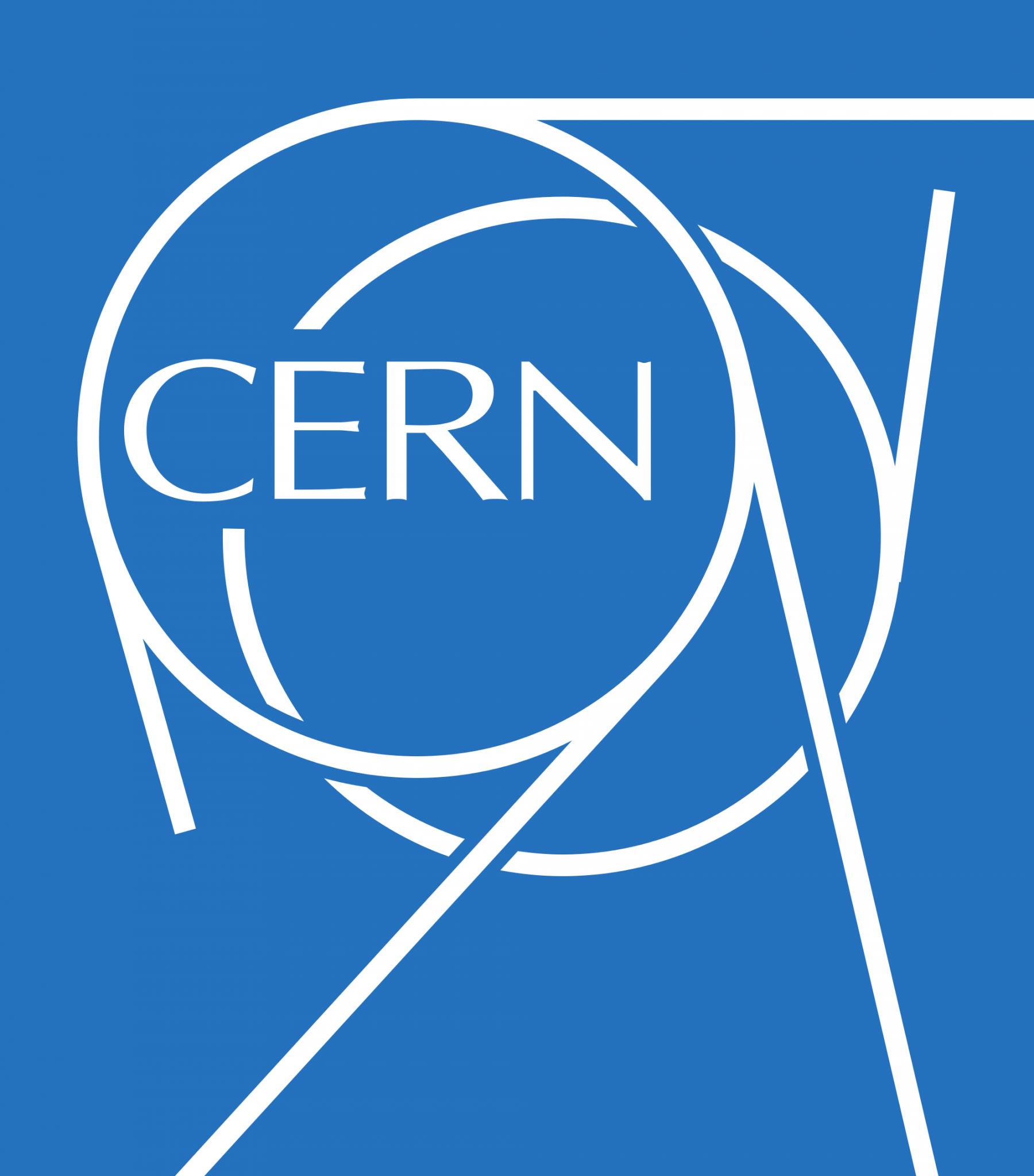
Das CERN, die Europäische Organisation für Kernforschung, ist eine Großforschungseinrichtung bei Meyrin im Kanton Genf in der Schweiz. Am CERN wird physikalische Grundlagenforschung betrieben, insbesondere wird mit Hilfe großer Teilchenbeschleuniger der Aufbau der Materie erforscht. Der derzeit bedeutendste ist der Large Hadron Collider, der 2008 in Betrieb genommen wurde.
Das Akronym CERN leitet sich vom französischen Namen des Rates ab, der mit der Gründung der Organisation beauftragt war, dem Conseil européen pour la recherche nucléaire. Die offiziellen Namen des CERN sind European Organization for Nuclear Research im Englischen beziehungsweise Organisation européenne pour la recherche nucléaire im Französischen.[1]
Derzeit hat das CERN 22 Mitgliedstaaten. Mit etwa 3.200 Mitarbeitern (Stand: 31. Dezember 2015)[2] ist das CERN das weltweit größte Forschungszentrum auf dem Gebiet der Teilchenphysik. Über 10.000 Gastwissenschaftler[2] aus 85 Nationen arbeiten an CERN-Experimenten. Das Jahresbudget des CERN belief sich 2014 auf ungefähr 1,11 Milliarden Schweizer Franken (ca. 1 Milliarde Euro).[3]
Das CERN ist außerdem der Geburtsort des World Wide Web.[4]
欧洲核子研究中心(法语:Organisation Européenne pour la Recherche Nucléaire;英文:European Organization for Nuclear Research,通常被简称为CERN ),是世界上最大的粒子物理学实验室,也是万维网的发祥地。它成立于1954年9月29日,总部位于瑞士日内瓦西北部郊区的法瑞边境上,享有治外法权。CERN目前有21个成员国。以色列是第一个也是目前唯一一个非欧洲成员国。
CERN也被用来称呼它的实验室,其主要功能是为高能物理学研究的需要,提供粒子加速器和其它基础设施,以进行许多国际合作的实验。同时也设立了资料处理能力很强的大型电脑中心,协助实验数据的分析,供其他地方的研究员使用,形成了一个庞大的网络中枢。
欧洲核子研究中心现在已经聘用大约三千名的全职员工。并有来自80个国籍的大约6500位科学家和工程师,代表500余所大学机构,在CERN进行试验。这大约占了世界上的粒子物理学圈子的一半。
粒子物理学博物馆欢迎一般公众在办公时间参观。除此之外,事前预约的话每天上下午共有两个时段可以参观实际的实验工作,并备有导览说明。导览员来自各国的实验合作者,可以提供多种语言的向导。

Das Eurokorps ist ein multinationales militärisches Hauptquartier der Staaten Deutschland, Frankreich, Belgien, Spanien, Luxemburg und Polen (Rahmennationen), das allen Mitgliedsstaaten der EU und den NATO-assoziierten Staaten offensteht. Es besteht aus einem Stab mit Unterstützungseinheiten mit rund 1.100 Soldaten und kann bis zu 60.000 Soldaten führen. Das Eurokorps plant Militäreinsätze im gesamten Einsatz- und Intensitätsspektrum und führt diese durch. Es stellt Kräfte für EU- und NATO-Missionen, u. a. für die schnelle Eingreiftruppe der NATO.
欧洲军团是欧洲的一个跨国军事组织,其共有约一千名士兵,驻扎于法国斯特拉斯堡。该组织在1992年5月建设总部,1995年开始正式运作。1987年成立的法德混合旅是其关键组成部分。[1]
欧洲军团不从属于任何其他军事组织,[1] 成员国组成的大会及一些官员决定它的部署。
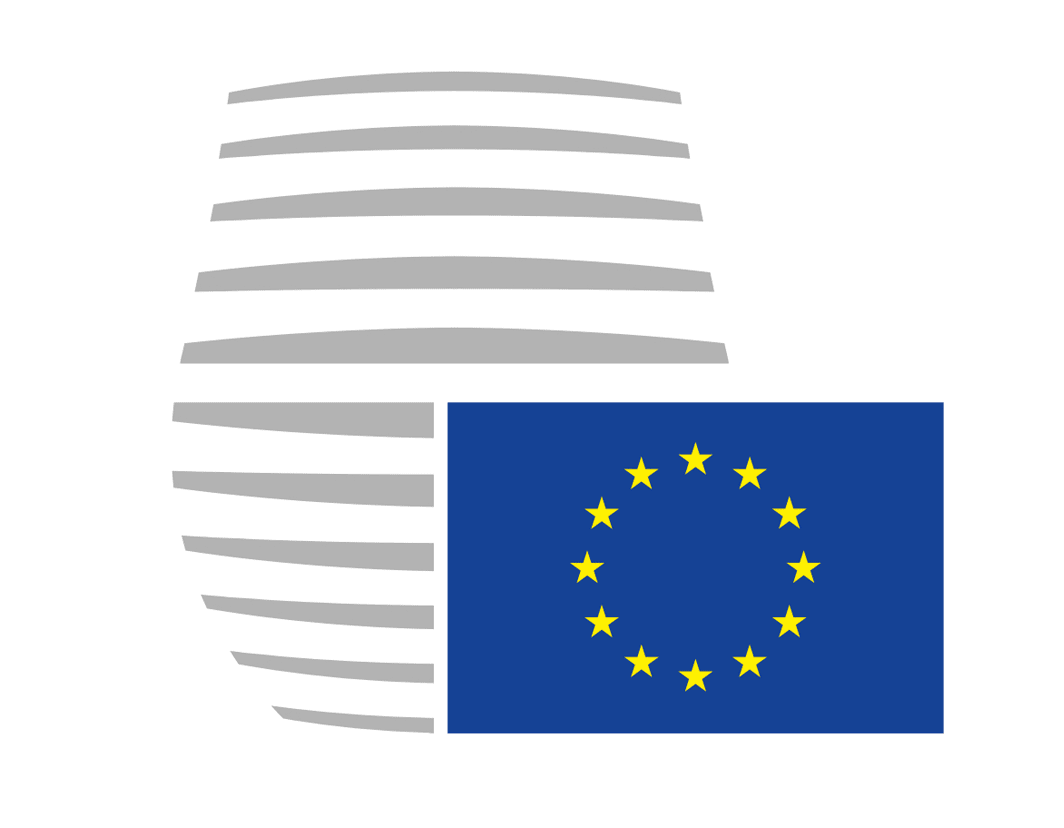
 Belgium
Belgium
 Bulgaria
Bulgaria
 Denmark
Denmark
 Germany
Germany
 Estonia
Estonia

 European Union
European Union
 Member States of the European Union
Member States of the European Union
 Finland
Finland
 France
France

 History
History

 History
History

 History
History
 N 2000 - 2100 AD
N 2000 - 2100 AD
 Greece
Greece

 Hand in Hand
Hand in Hand
 Ireland
Ireland
 Italy
Italy
 Croatia
Croatia
 Latvia
Latvia
 Lithuania
Lithuania
 Luxembourg
Luxembourg
 Malta
Malta
 Netherlands
Netherlands
 Nobel prize
Nobel prize
 Nobel Peace Prize
Nobel Peace Prize
 Nobel prize
Nobel prize
 2012
2012
 Austria
Austria

 Party and government
Party and government
 Group of the twenty most important industrial and emerging countries
Group of the twenty most important industrial and emerging countries

 Party and government
Party and government
 Group of Seven,G7
Group of Seven,G7
 Poland
Poland
 Portugal
Portugal
 Romania
Romania
 Sweden
Sweden
 Slovakia
Slovakia
 Slovenia
Slovenia
 Spain
Spain
 Czech Republic
Czech Republic
 Hungary
Hungary

 Economy and trade
Economy and trade
 Free trade agreement
Free trade agreement
 Cyprus
Cyprus
Die Europäische Union (EU) ist ein Verbund von derzeit 28 Mitgliedstaaten. Außerhalb von Europa umfasst die EU auch einige Überseegebiete. Sie hat insgesamt mehr als eine halbe Milliarde Einwohner. Gemessen am Bruttoinlandsprodukt ist der EU-Binnenmarkt der größte gemeinsame Wirtschaftsraum[7] der Erde. Die EU stellt eine eigenständige Rechtspersönlichkeit dar und hat daher Einsichts- und Rederecht bei den Vereinten Nationen.[8] Die verbreitetsten Sprachen in der EU sind Englisch, Deutsch und Französisch. Im Jahre 2012 wurde die Europäische Union mit dem Friedensnobelpreis ausgezeichnet.[9]
Das politische System der EU, das sich im Zuge der europäischen Integration herausgebildet hat, basiert auf dem Vertrag über die Europäische Union und dem Vertrag über die Arbeitsweise der Europäischen Union. Es enthält sowohl überstaatliche als auch zwischenstaatliche Elemente. Während im Europäischen Rat und im Rat der Europäischen Union die einzelnen Staaten mit ihren Regierungen vertreten sind, repräsentiert das Europäische Parlament bei der Rechtsetzung der EU unmittelbar die Unionsbürger. Die Europäische Kommission als Exekutivorgan und der EU-Gerichtshof als Rechtsprechungsinstanz sind ebenfalls überstaatliche Einrichtungen.
Die Anfänge der EU gehen auf die 1950er-Jahre zurück, als zunächst sechs Staaten die Europäische Wirtschaftsgemeinschaft (EWG) gründeten. Eine gezielte wirtschaftliche Verflechtung sollte militärische Konflikte für die Zukunft verhindern und durch den größeren Markt das Wirtschaftswachstum beschleunigen und damit den Wohlstand der Bürger steigern. Im Lauf der folgenden Jahrzehnte traten in mehreren Erweiterungsrunden weitere Staaten den Gemeinschaften (EG) bei. Ab 1985 wurden mit dem Schengener Übereinkommen die Binnengrenzen zwischen den Mitgliedsländern geöffnet. Nach dem Fall des Eisernen Vorhangs beziehungsweise der Auflösung des Ostblockes im Jahr 1989 änderte sich die geopolitische Lage in Europa grundlegend, womit sich Möglichkeiten zur Vertiefung der Integration, aber auch zur Vorbereitung von Erweiterungen im Osten ergaben. Mit dem Vertrag von Maastricht wurde 1992 die Europäische Union gegründet, die damit Zuständigkeiten in nichtwirtschaftlichen Politikbereichen bekam. In mehreren Reformverträgen, zuletzt im Vertrag von Lissabon, wurden die überstaatlichen Zuständigkeiten der EU ausgebaut und die demokratische Verankerung der politischen Entscheidungsprozesse auf Unionsebene nachgebessert, vor allem durch nochmalige Stärkung der Stellung des Europäischen Parlaments. Eine europäische Öffentlichkeit und Identität als Voraussetzung einer supranationalen Volkssouveränität bildet sich indes erst allmählich und nicht ohne Gegenströmungen heraus. Seit den 1980er-Jahren nahm mit den Kompetenzerweiterungen und dem damit einhergehenden Bedeutungsgewinn der EU auch die öffentliche Debatte über die Verfasstheit der EU an Intensität zu; dabei wurden auch EU-skeptische Positionen vermehrt artikuliert. Im Vertrag von Lissabon wurden im Jahr 2007 auch Austrittsszenarien geregelt.
Von den 28 EU-Staaten bilden 19 Staaten eine Wirtschafts- und Währungsunion. Im Jahr 2002 wurde eine gemeinsame Währung für diese Länder, der Euro, eingeführt. Im Rahmen des Raums der Freiheit, der Sicherheit und des Rechts arbeiten die EU-Mitgliedstaaten in der Innen- und Justizpolitik zusammen. Durch die gemeinsame Außen- und Sicherheitspolitik bemühen sie sich um ein gemeinsames Auftreten gegenüber Drittstaaten. Zukunftsbezogenes gemeinsames Handeln ist Gegenstand der Initiative Europa 2020, zu der unter anderem die Digitalpolitik gehört. Die Europäische Union hat Beobachterstatus in der G7, ist Mitglied in der G20 und vertritt ihre Mitgliedstaaten in der Welthandelsorganisation.
Die EU war 2016 der weltweit zweitgrößte Wirtschaftsraum nach nominalem (hinter den USA) sowie kaufkraftbereinigten Bruttoinlandsprodukt (hinter der Volksrepublik China). Als Staatenverbund ist sie der größte Güterproduzent und die größte Handelsmacht der Welt. Die Mitgliedsstaaten haben einen der höchsten Lebensstandards weltweit, wobei es jedoch auch innerhalb der EU deutliche Unterschiede zwischen einzelnen Ländern gibt. Im Index der menschlichen Entwicklung galten 2015 26 der 28 Mitgliedstaaten als „sehr hoch“ entwickelt.
Nach der Osterweiterung in den Jahren 2004 und 2007 ist die Europäische Union infolge der Finanzkrise ab 2007 und durch die Flüchtlingskrise ab 2015 in verschiedenen Mitgliedsstaaten einer zunehmenden EU-Skepsis von Teilen der Bevölkerung ausgesetzt, die sich unter anderem in dem Brexit-Referendum von 2016 niedergeschlagen hat. Unter dem Eindruck der Krisenerscheinungen und der Zunahme von rechtspopulistischen Tendenzen in den Mitgliedstaaten der Union wird die EU-Finalitätsdebatte neuerlich intensiv geführt. Einen auf die nähere Zukunft gerichteten, stark beachteten Reformplan hat der französische Staatspräsident Emmanuel Macron mit seiner Initiative für Europa vorgelegt.
欧洲联盟(英语:European Union;法语:Union européenne;德语:Europäische Union),简称欧盟(英语:EU;法语:UE;德语:EU),是根据1993年生效的《马斯特里赫特条约》(也称《欧洲联盟条约》)所建立的政治经济联盟,现拥有28个成员国,正式官方语言有24种。规范欧盟的条约经过多次修订,目前欧盟的运作方式依照《里斯本条约》。政治上所有成员国均为议会民主国家(2008年《经济学人》民主状态调查);经济上为仅次于以美国为首的北美自由贸易区的世界上第二大经济实体,德国、法国及意大利为欧盟三大核心成员国;军事上绝大多数欧盟成员国均为北大西洋公约组织成员。
欧盟的历史可追溯至1952年建立的欧洲煤钢共同体,当时只有六个成员国。1958年又成立了欧洲经济共同体和欧洲原子能共同体,1967年统合在欧洲各共同体之下,1993年又统合在欧洲联盟之下,欧盟已经渐渐地从贸易实体转变成经济和政治联盟。同时,欧洲经济共同体和后来的欧盟在1973年至2013年期间进行了八次扩大,成员国从6个增至28个。起初推动欧盟建立的动机,是渴望重建二战后损失惨重的欧洲,以及担忧欧洲会再度陷入战争泥潭。
欧盟的主要机构有欧洲委员会(成员国家首脑组成)、欧盟理事会(成员国家部长组成的欧盟的上议院)、欧盟委员会(欧盟的行政机构)、欧洲议会(欧盟的众议院,唯一的直接民选机构)、欧洲法院、欧洲中央银行等。此外,欧洲原子能共同体也在欧洲共同体的管辖范围之内,但在法律上是独立于欧盟的国际组织。
欧元由28个成员国中的19个采纳为流通货币;《申根条约》取消了部分成员国之间的边境管制,目前已有22个欧盟成员国和4个非成员国实施。
目前欧盟的主要议题有英国脱欧、欧盟的扩大、落实《里斯本条约》、全球暖化问题、非欧元区成员国加入欧元区、主权债务危机、移民危机等。
欧州連合(おうしゅうれんごう、英: European Union、略称:EU)は、マーストリヒト条約により設立されたヨーロッパの地域統合体。
欧州連合では欧州連合条約の発効前に調印されていた単一欧州議定書によって市場統合が実現し、またシェンゲン協定により域内での国境通過にかかる手続きなどの負担を大幅に削減した。さらに欧州連合条約発効後によって外交・安全保障分野と司法・内務分野での枠組みが新たに設けられ、ユーロの導入による通貨統合が進められている。このほかにも欧州議会の直接選挙が実施されたり、欧州連合基本権憲章が採択されたりするなど、欧州連合の市民の概念が具現化されつつある。加盟国数も欧州経済共同体設立を定めたローマ条約発効時の6か国から、2013年7月のクロアチア加盟により28か国にまで増えている。
The European Union (EU) is a political and economic union of 28 member states that are located primarily in Europe.[13] It has an area of 4,475,757 km2 (1,728,099 sq mi) and an estimated population of over 510 million. The EU has developed an internal single market through a standardised system of laws that apply in all member states in those matters (only) where members have agreed to act as one. EU policies aim to ensure the free movement of people, goods, services and capital within the internal market,[14] enact legislation in justice and home affairs and maintain common policies on trade,[15] agriculture,[16] fisheries and regional development.[17] For travel within the Schengen Area, passport controls have been abolished.[18] A monetary union was established in 1999 and came into full force in 2002 and is composed of 19 EU member states which use the euro currency.
The EU and European citizenship were established when the Maastricht Treaty was enacted in 1993.[19] The EU traces its origins to the European Coal and Steel Community (ECSC) and the European Economic Community (EEC), established, respectively, by the 1951 Treaty of Paris and 1957 Treaty of Rome. The original members of what came to be known as the European Communities were the Inner Six: Belgium, France, Italy, Luxembourg, the Netherlands, and West Germany. The Communities and its successors have grown in size by the accession of new member states and in power by the addition of policy areas to its remit. The latest major amendment to the constitutional basis of the EU, the Treaty of Lisbon, came into force in 2009. While no member state has left the EU or its predecessors, the United Kingdom signified an intention to leave after a membership referendum in June 2016 and is negotiating its withdrawal.
The European Union provides more foreign aid than any other economic union.[20] Covering 7.3% of the world population,[21] the EU in 2017 generated a nominal gross domestic product (GDP) of 19.670 trillion US dollars, constituting approximately 24.6% of global nominal GDP[22] and 16.5% when measured in terms of purchasing power parity.[23] Additionally, 27 out of 28 EU countries have a very high Human Development Index, according to the United Nations Development Programme. In 2012, the EU was awarded the Nobel Peace Prize.[24] Through the Common Foreign and Security Policy, the EU has developed a role in external relations and defence. The union maintains permanent diplomatic missions throughout the world and represents itself at the United Nations, the World Trade Organization, the G7 and the G20. Because of its global influence, the European Union has been described as an emerging superpower.[25]
L'Union européenne (UE)Note 4 est une association politico-économique sui generis de vingt-huit États européens qui délèguent ou transmettent par traité l’exercice de certaines compétences à des organes communautaires5,6. Elle s'étend sur un territoire de 4,5 millions de kilomètres carrés7, est peuplée de plus de 512 millions d'habitants3 et est la deuxième puissance économique mondiale en termes de PIB nominal derrière les États-Unis8,9,10. L’Union européenne est régie par le traité de Maastricht (TUE) et le traité de Rome (TFUE), dans leur version actuelle, depuis le 1er décembre 2009 et l'entrée en vigueur du traité de Lisbonne. Sa structure institutionnelle est en partie supranationale et en partie intergouvernementale : le Parlement européen est élu au suffrage universel direct, tandis que le Conseil européen et le Conseil de l'Union européenne (informellement le « Conseil des ministres ») sont composés de représentants des États membres. Le président de la Commission européenne est pour sa part élu par le Parlement sur proposition du Conseil européen. La Cour de justice de l'Union européenne est chargée de veiller à l'application du droit de l'Union européenne.
La déclaration du 9 mai 1950 de Robert Schuman, alors ministre français des Affaires étrangères, est considérée comme le texte fondateur de la construction européenne. Sous l’impulsion de personnalités politiques surnommées les « pères de l'Europe »11, comme Konrad Adenauer, Jean Monnet et Alcide De Gasperi, six États créent en 1951 la Communauté européenne du charbon et de l'acier. Après l’échec d'une Communauté européenne de défense en 1954, une Communauté économique européenne est instaurée en 1957 par le traité de Rome. La coopération économique est approfondie par l’Acte unique européen en 1986. En 1992, le traité de Maastricht prend la suite de l’Acte unique et institue une union politique qui prend le nom d’Union européenne et qui prévoit la création d'une union économique et monétaire dotée d’une monnaie unique : l’euro. Instituée en 1999, la zone euro compte dix-neuf États en 2017. De nouvelles réformes institutionnelles sont introduites en 1997 et en 2001. À la suite de l’échec d’un projet de constitution européenne après le refus par référendum des peuples français et néerlandais, les institutions sont à nouveau réformées en 2009 par le traité de Lisbonne pour y intégrer les mesures prévues par ce projet de constitution.
Depuis la formation de la CEE, le nombre d'États membres est passé de 6 à 28. Les membres fondateurs de la Communauté économique européenne, en 1957, sont l'AllemagneNote 5, la Belgique, la France, l'Italie, le Luxembourg et les Pays-Bas. Ils sont rejoints en 1973 par trois membres de l'Association européenne de libre-échange : le Danemark, l'Irlande et le Royaume-Uni. L'Union s'élargit vers le sud avec d'abord l'adhésion de la Grèce en 1981, puis celle de l'Espagne et du Portugal en 1986. Entretemps, en 1985, le Groenland a décidé de se retirer en ratifiant le Traité sur le Groenland et a désormais le statut de pays et territoire d'outre-mer associé. Avec la fin de la Guerre froide, la partie orientale de l'Allemagne rejoint la Communauté économique européenne en 1990Note 6. L'Union européenne intègre en 1995 des États neutres : l'Autriche, la Finlande et la Suède. En 2004, dix nouveaux États, en majorité issus du bloc de l'Est, s'ajoutent aux quinze déjà membres : Chypre, l'Estonie, la Hongrie, la Lettonie, la Lituanie, Malte, la Pologne, la Slovaquie, la Slovénie et République tchèque. Deux États supplémentaires, la Bulgarie et la Roumanie, complètent en 2007 ce cinquième élargissement, Enfin, en 2013, la Croatie rejoint l'Union12. Le 23 juin 2016, les citoyens britanniques votent en majorité pour la sortie du Royaume-Uni de l'Union européenne dans le cadre d'un référendum. La procédure de retrait est enclenchée le 29 mars 2017 par l'activation de l'article 50 du traité sur l'Union européenne.
Le 12 octobre 2012, le prix Nobel de la paix est attribué à l'Union européenne pour « sa contribution à la promotion de la paix, la réconciliation, la démocratie et les droits de l'Homme en Europe »13.
L'Unione europea (abbreviata in UE o Ue, pron. /ˈue/[12]) è un'organizzazione internazionale politica ed economica a carattere sovranazionale, che comprende 28 paesi membri indipendenti e democratici. La sua formazione risale al trattato di Roma del 25 marzo 1957, la denominazione attuale al trattato di Maastricht del 7 febbraio 1992 (entrato in vigore il 1º novembre 1993), e l'istituzione ufficiale al 2002 con l'avvento della valuta unica ed il successivo trattato di Lisbona, dopo un lungo percorso intrapreso dalle Comunità europee precedentemente esistenti e attraverso la stipulazione di numerosi trattati, che hanno contribuito al processo di integrazione europea.
Questa garantisce la libera circolazione di persone, merci, servizi e capitali all'interno del suo territorio attraverso un mercato europeo comune e la cittadinanza dell'Unione europea, promuove la pace, i valori e il benessere dei suoi popoli, lotta contro l'esclusione sociale e la discriminazione, favorisce il progresso scientifico e tecnologico e mira alla stabilità politica, alla crescita economica e alla coesione sociale e territoriale tra gli stati membri[13], cercando di attenuare le differenze socio-economiche tra i vari stati membri e incrementarne il benessere socio-economico.
Le competenze dell'Unione europea spaziano dalle politiche economiche (agricoltura e commercio) agli affari esteri, alla difesa e alla protezione ambientale, con una politica agraria comune, una politica estera comune e la presenza di fondi strutturali per il raggiungimento degli obiettivi socio-economici preposti. In alcuni di questi campi tali funzioni la rendono dunque simile a una federazione di stati (per es. per quanto riguarda gli affari monetari o le politiche ambientali), mentre in altri settori l'Unione è più vicina a una confederazione (mancando di una Costituzione, ordinamento giuridico, politica interna e politica industriale comuni) o a un'organizzazione politica sovranazionale (come per la politica estera).
Le politiche di unione economica e monetaria dell'Unione europea hanno portato nel 2002 all'introduzione di una moneta unica, l'euro, attualmente adottato da 19 stati dell'Unione, che formano la cosiddetta eurozona, con una politica monetaria comune regolata dalla Banca centrale europea (BCE).
Il 12 ottobre 2012 è stata insignita del premio Nobel per la pace, con la seguente motivazione: «per oltre sei decenni ha contribuito all'avanzamento della pace e della riconciliazione, della democrazia e dei diritti umani in Europa».[14]
La Unión Europea (UE) es una comunidad política de derecho constituida en régimen sui géneris de organización internacional nacida para propiciar y acoger la integración y gobernanza en común de los Estados y los pueblos de Europa. Está compuesta por veintiocho Estados europeos y fue establecida con la entrada en vigor del Tratado de la Unión Europea (TUE) el 1 de noviembre de 1993.6
Con ese acto, la supraestructura «Unión Europea» aunaba y se fundaba sobre las tres Comunidades Europeas preexistentes —la Comunidad Europea del Carbón y del Acero (CECA), la Comunidad Europea de la Energía Atómica (Euratom) y la Comunidad Económica Europea (CEE/CE)— y les añadía la política exterior común y la cooperación judicial y policial, formando un sistema complejo conocido como «los tres pilares». Sin embargo, con la entrada en vigor el 1 de diciembre de 2009 del Tratado de Lisboa, la Unión Europea sucedió, por completo aunque con ciertas particularidades, a las Comunidades Europeas y asumió con ello su personalidad jurídica única como sujeto de derecho internacional.7
La Unión Europea ha desarrollado un sistema jurídico y político, el comunitario europeo, único en el mundo, que se rige por mecanismos y procedimientos de funcionamiento interno complejos, que se han extendido y evolucionado a lo largo de su historia hasta conformar, en la actualidad, un sistema híbrido de gobierno transnacional difícilmente homologable que combina elementos próximos a la cooperación multilateral, si bien fuertemente estructurada e institucionalizada, con otros de vocación netamente supranacional, regidos ambos por una dinámica de integración regional muy acentuada.
Todo esto desemboca en una peculiarísima comunidad de Derecho, cuya naturaleza jurídica y política es muy discutida, si bien sus elementos fundacionales y su evolución histórica, todavía abierta, apuntan, en el presente, a una especial forma de moderna confederación o gobernanza supranacional, acusadamente institucionalizada y con una inspiración histórico-política de vocación federal —en el sentido de un federalismo internacional n
 Belgium
Belgium
 Brazil
Brazil
 Denmark
Denmark
 Germany
Germany
 European Southern Observatory
European Southern Observatory
 Finland
Finland
 France
France
 Italy
Italy



 Aerospace
Aerospace
 Netherlands
Netherlands
 Austria
Austria
 Portugal
Portugal
 Sweden
Sweden
 Switzerland
Switzerland
 Spain
Spain
 Czech Republic
Czech Republic
 United Kingdom
United Kingdom

 Science and technology
Science and technology
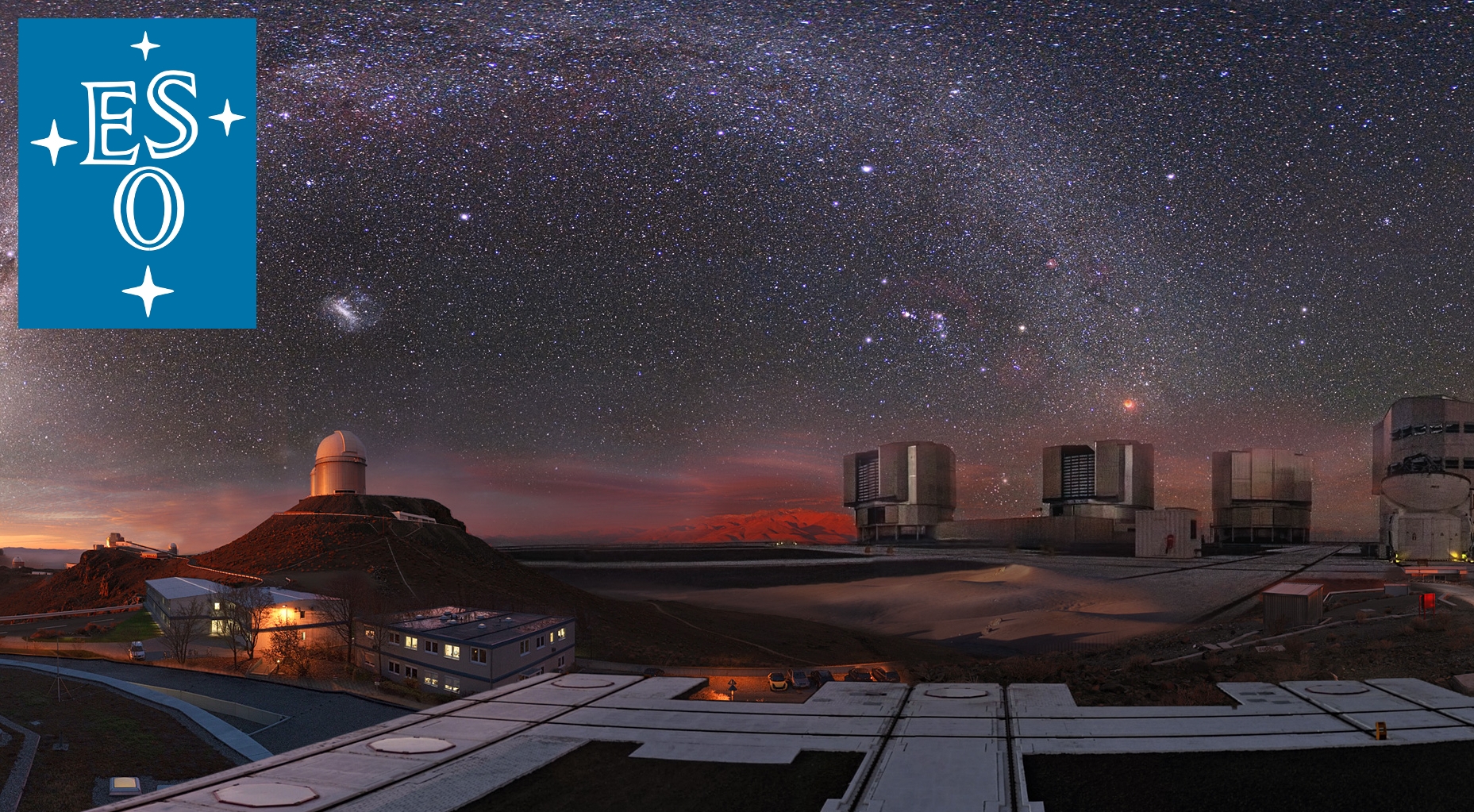
Die vielen Beobachtungseinrichtungen der ESO verhalfen der Astronomie zu zahlreichen Entdeckungen und produzierten einige astronomische Kataloge.
Unter anderen wurden an ESO-Observatorien der bis heute am weitesten entfernte Gammablitz beobachtet sowie Beweise für die Existenz eines Schwarzen Lochs im Zentrum unserer Milchstraße gefunden.
Die Zunahme der Expansionsgeschwindigkeit des Universums konnte basierend auf Beobachtungen weit entfernter Supernovae mit den Teleskopen auf La Silla gezeigt werden.[2]
Das Very Large Telescope (VLT, deutsch sehr großes Teleskop) konnte zum ersten Mal Kohlenmonoxid-Moleküle in einer Galaxie in einer Entfernung von etwa elf Milliarden Lichtjahren analysieren. Dies ermöglichte die Erlangung der präzisesten Messergebnisse der Temperatur für eine derart entfernte Epoche.[3]
Ebenso mit dem VLT konnten Astronomen das größte gemessene Alter eines Sterns in unserer Milchstraße bestimmen. Mit seinen 13,2 Milliarden Jahren wurde der Stern in einer der frühesten Phasen der Sternentstehung im Universum geboren.[4]
2004 konnte mit Hilfe des VLT das erste Bild eines extrasolaren Planeten (2M1207 b) aufgenommen werden. Seither konnten mit dem Spektrografen HARPS viele weitere extrasolare Planeten aufgespürt werden.
Nach in Summe über 1000 Beobachtungsnächten auf La Silla, die sich über 15 Jahre hin erstreckten, konnten die Bewegungsmuster von mehr als 14.000 sonnenähnlichen Sternen in Nachbarschaft der Sonne bestimmt werden. Es konnte somit gezeigt werden, dass unsere Heimatgalaxie ein turbulenteres und chaotischeres Leben durchmachte als zuvor angenommen wurde.[5]
欧洲南方天文台(英语:The European Southern Observatory,缩写:ESO)是为在南半球研究天文学,在政府间组织的一个研究机构,由15个国家组成和支援的一个天文研究组织。它成立于1962年,目的是为欧洲天文学家提供先进的设施和捷径以研究南方的天空。这个组织总部设在德国慕尼黑附近的加兴,雇用了约730名工作人员,每年并接受成员国约1亿3100万欧元的经费[1]。
欧洲南方天文台建设和经营一些已知规模最大和技术最先进的望远镜,包括首创主动光学技术的新技术望远镜、和由4个8米等级的望远镜和4个1.8米辅助望远镜组成的甚大望远镜。目前由ESO进行的计划包括亚他加马大型毫米波阵列和欧洲极大望远镜。
ALMA是下一个十年最大的地面天文专案,将成为在毫米与次毫米波尺度下观测的主要新工具。他的建设正在进行中,预计于2013年完成。ALMA专案是欧洲各国、亚洲、北美洲和智利之间的国际合作计划。欧洲执行权由ESO代表行使,并且还主持ALMA区域中心[2]。
E-ELT是40米等级的望远镜,目前还在细部设计阶段,将是世界上观测天空最大的巨眼。 欧洲极大望远镜,它将极有力的推动天文物理学的知识,能够仔细研究的天体,包括围绕着其它恒星的行星、宇宙中的第一个天体、超大质量黑洞、和主宰宇宙的暗物质与暗能量的自然本质和分布。从2005年底,ESO就一直与工作和使用社群的欧洲天文学家和天文物理学家共同来定义此新的聚型望远镜[3]。
ESO的观测机构已经作出许多重大的天文发现和一些天体目录[4]。最近的研究结果包括发现最遥远的伽玛射线暴和我们的星系,银河系,中心有黑洞的证据。2004年,甚大望远镜让天文学家获得第一张在173光年外环绕着的棕矮星的系外行星2M1207b轨道的绝佳影像。安装在ESO另一架望远镜上的仪器,高精度径向速度行星搜索器发现许多的系外行星,包括迄今发现最小的系外行星格利泽581c。甚大望远镜还发现迄今距离人类最遥远星系的候选者阿贝尔1835 IR1916。
ヨーロッパ南天天文台(ヨーロッパなんてんてんもんだい、European Southern Observatory、略称:ESO)は、ヨーロッパ14ヶ国およびブラジルが共同で運営する天文観測施設である。1964年に設立された。チリにある天文台を運営している。本部はミュンヘン近郊のGarchingにある。ラ・シヤ天文台(La Silla Observatory)、パラナル天文台(Paranal Observatory)、チャナントール天文台(Llano de Chajnantor Observatory)がおもな施設である。
The European Southern Observatory (ESO), formally the European Organisation for Astronomical Research in the Southern Hemisphere[2], is a 16-nation intergovernmental research organization for ground-based astronomy. Created in 1962, ESO has provided astronomers with state-of-the-art research facilities and access to the southern sky. The organisation employs about 730 staff members and receives annual member state contributions of approximately €162 million.[3] Its observatories are located in northern Chile.
ESO has built and operated some of the largest and most technologically advanced telescopes. These include the 3.6 m New Technology Telescope, an early pioneer in the use of active optics, and the Very Large Telescope (VLT), which consists of four individual 8.2 m telescopes and four smaller auxiliary telescopes which can all work together or separately. The Atacama Large Millimeter Array observes the universe in the millimetre and submillimetre wavelength ranges, and is the world's largest ground-based astronomy project to date. It was completed in March 2013 in an international collaboration by Europe (represented by ESO), North America, East Asia and Chile.[4][5]
Currently under construction is the Extremely Large Telescope. It will use a 39.3-metre-diameter segmented mirror, and become the world's largest optical reflecting telescope when operational in 2024. Its light-gathering power will allow detailed studies of planets around other stars, the first objects in the universe, supermassive black holes, and the nature and distribution of the dark matter and dark energy which dominate the universe.
ESO's observing facilities have made astronomical discoveries and produced several astronomical catalogues.[6] Its findings include the discovery of the most distant gamma-ray burst and evidence for a black hole at the centre of the Milky Way.[7][8] In 2004, the VLT allowed astronomers to obtain the first picture of an extrasolar planet (2M1207b) orbiting a brown dwarf 173 light-years away.[9] The High Accuracy Radial Velocity Planet Searcher (HARPS) instrument installed on the older ESO 3.6 m telescope led to the discovery of extrasolar planets, including Gliese 581c—one of the smallest planets seen outside the solar system.[10]
L’Observatoire européen austral (en anglais, European Southern Observatory : ESO), officiellement nommé l'Organisation européenne pour des observations astronomiques dans l’hémisphère austral1 (European Organisation for Astronomical Research in the Southern Hemisphere), est une organisation intergouvernementale pour l’astronomie fondée en 1962 par cinq pays européens, afin de créer un observatoire astronomique de pointe au sol dans l'hémisphère austral à disposition des astronomes.
L'ESO est l'acteur principal de l'astronomie observationnelle européenne. Il possède des télescopes allant de 2,2 à 8,20 mètres de diamètre, un parc d'une vingtaine d'instruments, dont 15 à Paranal, permettant des observations en imagerie, photométrie, spectroscopie, interférométrie dans à peu près toutes les longueurs d'onde allant du proche ultraviolet à l'infrarouge thermique (vers 20 microns). L'organisation possède également un système complet d'archivage des données, en partenariat avec l'agence de coordination entre l'Europe et le télescope spatial Hubble.
Son siège se trouve à Garching bei München près de Munich en Allemagne ; il dispose de bureaux au Chili à Vitacura dans la capitale Santiago du Chili. En 2018, l'organisation compte 16 états membres et trois sites d'observations, tous au Chili : l'Observatoire de La Silla, l'Observatoire du Cerro Paranal, où se trouve le Very Large Telescope, et l'Observatoire du Llano de Chajnantor.
L’Osservatorio Europeo Australe (ESO, dall'inglese European Southern Observatory, formalmente Organizzazione europea per la ricerca astronomica nell'emisfero australe) è un'organizzazione astronomica internazionale, di cui a settembre 2018 fanno parte sedici nazioni.[1] Creata nel 1962, l'ESO fornisce agli astronomi strumenti all'avanguardia e un accesso al cielo australe. L'organizzazione impiega circa 730 persone e riceve contributi annui di circa 143 milioni di Euro da parte degli Stati membri.[2]
ESO ha costruito e gestito alcuni dei più grandi e più avanzati telescopi del mondo, come il New Technology Telescope (NTT), il telescopio che lanciò la tecnologia dell'ottica attiva e il VLT (Very Large Telescope), composto da quattro telescopi principali (UT) con specchi primari di 8,2 metri di diametro e quattro telescopi ausiliari mobili (in inglese, Auxiliary Telescope, AT) di 1,8 metri di diametro. Ultimo progetto sviluppato da ESO è l'Atacama Large Millimeter Array (ALMA), mentre in fase di sviluppo si trova l'European Extremely Large Telescope (E-ELT).
Atacama Large Millimeter Array (ALMA) è un osservatorio rivoluzionario per l'osservazione dell'universo nelle radiazioni millimetriche/submillimetriche ed è attualmente il più grande progetto astronomico da terra. La sua costruzione è stata completata nel 2013. Il progetto ALMA è una collaborazione internazionale tra l'Europa (rappresentata da ESO), il sud est asiatico, l'America del Nord e la Repubblica del Cile.[3][4]
Uno dei più ambiziosi progetti di ESO è l'E-ELT (che sta per European Extremely Large Telescope), un telescopio di 39 metri di diametro, basato su un design innovativo con 5 specchi. Una volta costruito l'E-ELT sarà il più grande telescopio ottico/infrarosso al mondo. ESO ha cominciato la fase di design di questo telescopio all'inizio del 2006, con lo scopo di essere pronti a costruirlo nel 2014.[5] L'E-ELT dovrebbe essere pronto nel 2025. La grande capacità di accumulare la luce dell'E-ELT permetterà studi dettagliati di pianeti attorno ad altre stelle, dei primi oggetti dell'universo, di buchi neri supermassicci e della natura e della distribuzione della materia e dell'energia oscura che dominano l'universo.
I numerosi strumenti di osservazione di ESO hanno permesso molte scoperte astronomiche e prodotto diversi cataloghi astronomici.[6] Tra le più recenti scoperte: il più distante lampo gamma e il buco nero al centro della nostra galassia, la Via Lattea.[7][8] Nel 2004 il VLT ha dato agli astronomi la possibilità di ottenere la prima foto di un pianeta extra-solare, 2M1207b, che orbita attorno ad una nana bruna distante 173 anni-luce.[9] Lo spettrografo HARPS ha permesso la scoperta di molti altri pianeti extra-solari, incluso un pianeta 5 volte più pesante della Terra che orbita attorno ad una nana rossa, chiamato Gliese 581c.[10] Il VLT ha anche scoperto la galassia più lontana mai vista dall'uomo, Abell 1835 IR1916.
La Organización Europea para la Investigación Astronómica en el Hemisferio Austral (en inglés European Organisation for Astronomical Research in the Southern Hemisphere o European Southern Observatory), más conocida como el Observatorio Europeo Austral o Del Sur es una organización astronómica intergubernamental creada en el año 1962, dedicada a la astrofísica y al desarrollo y operación de telescopios en la Zona Norte de Chile.
Sus oficinas centrales están en Garching, cerca de Múnich, Alemania, y además cuenta con una oficina en Santiago, Chile.
Uno de los proyectos más destacados del ESO es el Telescopio Europeo Extremadamente Grande, la propuesta para la nueva generación de telescopios ópticos terrestres.
Европейская южная обсерватория, (англ. ESO, European Southern Observatory, официальное название — Европейская организация астрономических исследований в Южном полушарии) — международная исследовательская организация, членами которой являются 15 европейских государств и Бразилия.
Идея создания объединённой европейской обсерватории появилась в Лейденской обсерватории в Нидерландах весной 1953 года у Вальтера Бааде и Яна Оорта. 21 июня того же года Оорт собрал группу астрономов в Лейдене, чтобы обсудить возможность её создания. Позднее этот вопрос был поднят на Гронингской конференции, также проводившейся в Нидерландах. 26 января 1954 года декларация ESO была подписана ведущими астрономами шести европейских стран за создание совместной европейской обсерватории в южном полушарии.[1]
Выбор южного полушария был обоснован тем, что все крупные рефлекторные телескопы на тот момент находились в северном полушарии. Кроме того, многие объекты, такие как центральная часть Млечного Пути и Магеллановы облака, доступны только из южного полушария. Изначально планировалось, что телескопы будут располагаться в Южной Африке, однако в ходе наблюдений выяснилось, что условия в Южных Андах более предпочтительны, и 15 ноября 1963 года местом расположения обсерватории была выбрана Республика Чили.[2]
До принятия этого решения 5 октября 1962 года Бельгией, Германией, Францией, Нидерландами и Швецией была подписана Конвенция ESO, а на должность генерального директора был назначен Отто Хекман.
Первые телескопы ESO, расположенные в Ла-Силье, начали работать в 1966 году.[1] В 1980 году штаб-квартира европейского департамента ESO была перенесена в Гархинг под Мюнхеном, Германия.

 Albania
Albania
 Andorra
Andorra
 Armenia
Armenia
 Azerbaijan
Azerbaijan
 Belgium
Belgium
 Bosnia Herzegovina
Bosnia Herzegovina
 Bulgaria
Bulgaria
 Denmark
Denmark
 Germany
Germany
 Estonia
Estonia
 Finland
Finland
 France
France
 Georgia
Georgia
 Greece
Greece
 Ireland
Ireland
 Iceland
Iceland
 Italy
Italy
 Croatia
Croatia
 Latvia
Latvia
 Liechtenstein
Liechtenstein
 Lithuania
Lithuania
 Luxembourg
Luxembourg
 Malta
Malta
 Moldawien
Moldawien
 Monaco
Monaco
 Montenegro
Montenegro
 Netherlands
Netherlands
 Nordmazedonien
Nordmazedonien
 Norwegen
Norwegen
 Austria
Austria
 Poland
Poland
 Portugal
Portugal
 Romania
Romania
 Russia
Russia
 San Marino
San Marino
 Sweden
Sweden
 Switzerland
Switzerland
 Serbia
Serbia
 Slovakia
Slovakia
 Slovenia
Slovenia
 Spain
Spain
 Czech Republic
Czech Republic
 Turkey
Turkey
 Ukraine
Ukraine
 Hungary
Hungary
 United Kingdom
United Kingdom
 Cyprus
Cyprus
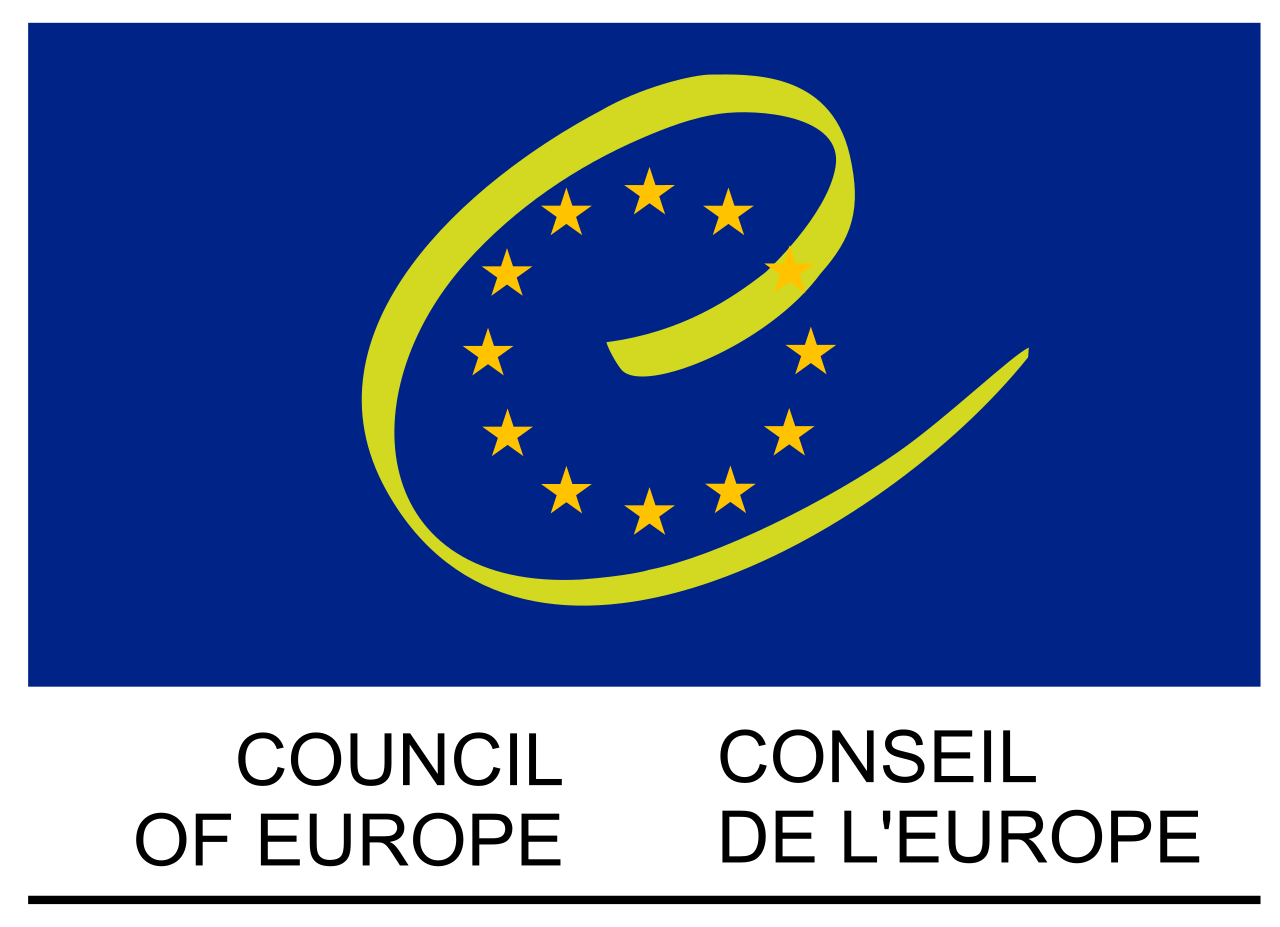





 Military, defense and equipment
Military, defense and equipment
 Grand Est
Grand Est

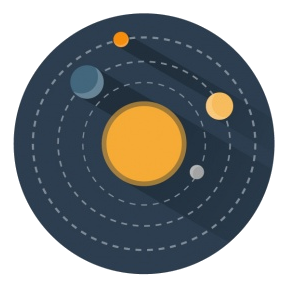 Astronomy
Astronomy
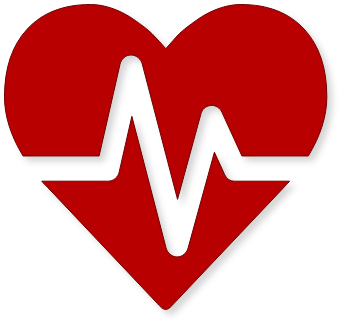 Medical, Pharmaceutical, Rehabilitation
Medical, Pharmaceutical, Rehabilitation